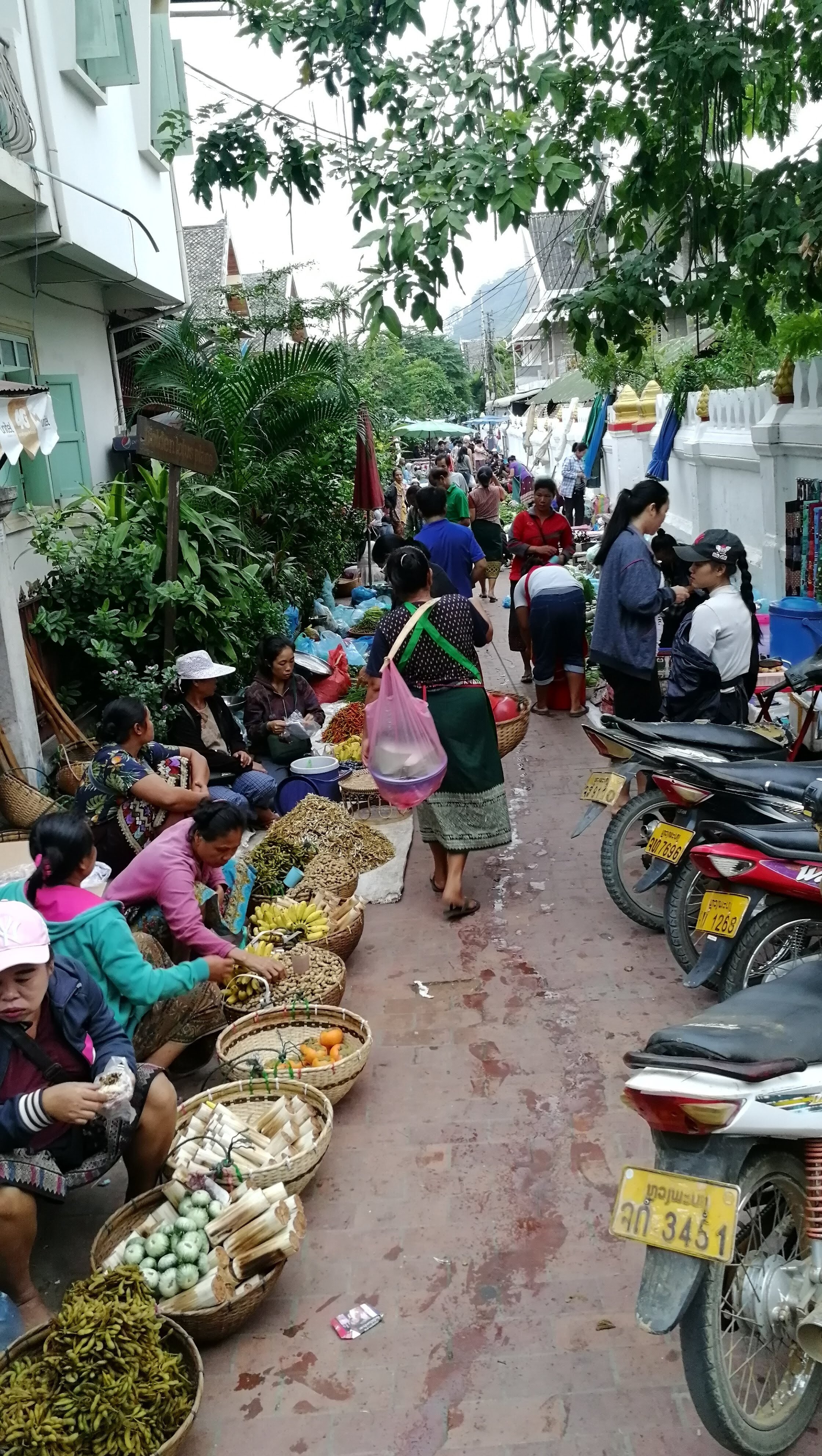The Laos Buffalo Dairy Story: Part 1 - From Singapore to Mozzarella
In this week’s blog post chef Rachel shares our story as we tell it on the farm tour. We realise that while some people know about us, they don’t really know how we got here. Well, here goes!
Callie, Josh, Brie and Sarah on holiday in Borneo.
In 2013 our two families had a collective mid-life crisis. Susie quit her job, and a few months later, Matt quit his job. It was Halloween night in Singapore when Matt called me to say he had quit and was going to get a beer before coming home. At the time, I was walking down 42 flights of stairs with the kids and trick-or-treating. Talk about a time to have a mid-life crisis and a bit of a freak-out!
When I arrived home and told Susie what had happened, I asked her what we were going to do now, because I knew I certainly wasn’t ready to go home (meaning back to America). Susie suggested we go build a hotel somewhere and I agreed and thought we should go to Laos. Now, you might ask why a hotel and what could we possibly know about building one?? Well, Susie was regional GM of serviced offices with a head for numbers, marketing and staffing; Steven was an electrician and a construction manager in his old life; I was a chef and Matt was in finance. All four of us made a great team to start a project like this.
The next day we broke the news to Steven and Matt and told them our idea, and not even two weeks later, Susie and I were on a plane to go have a look-see at Luang Prabang. We had been to Luang Prabang to visit as tourists, but now we decided to go have a look to see if we might be able to go and move there for any opportunities and have a life there with our families.
Our buffalo curd & treacle breakfast in Sri Lanka.
While visiting, Susie and I decided to spend more money on food-related things than accommodation. One of the things we decided to do was to take the cooking class with Amantaka, a luxury hotel, and which included a field trip through the morning market with the chef. While walking through the market, we asked the chef where the buffalo curd was. Having been to Sri Lanka, and having had the curd every morning for breakfast while there, we naturally assumed that we would find it in Laos as well, considering how many buffalo walked around. He looked at us like we had three heads and asked, the what? When we explained it was a rich, creamy, thick yogurt made from buffalo milk and since there were so many buffalo, we thought they would milk them and make it. The chef stopped dead in the middle of the market and gave us a wide-eyed stare, while asking, “You can milk buffalo??”
Susie and I looked at each other and said, “Oh, we can do this!” And so, an idea was born.
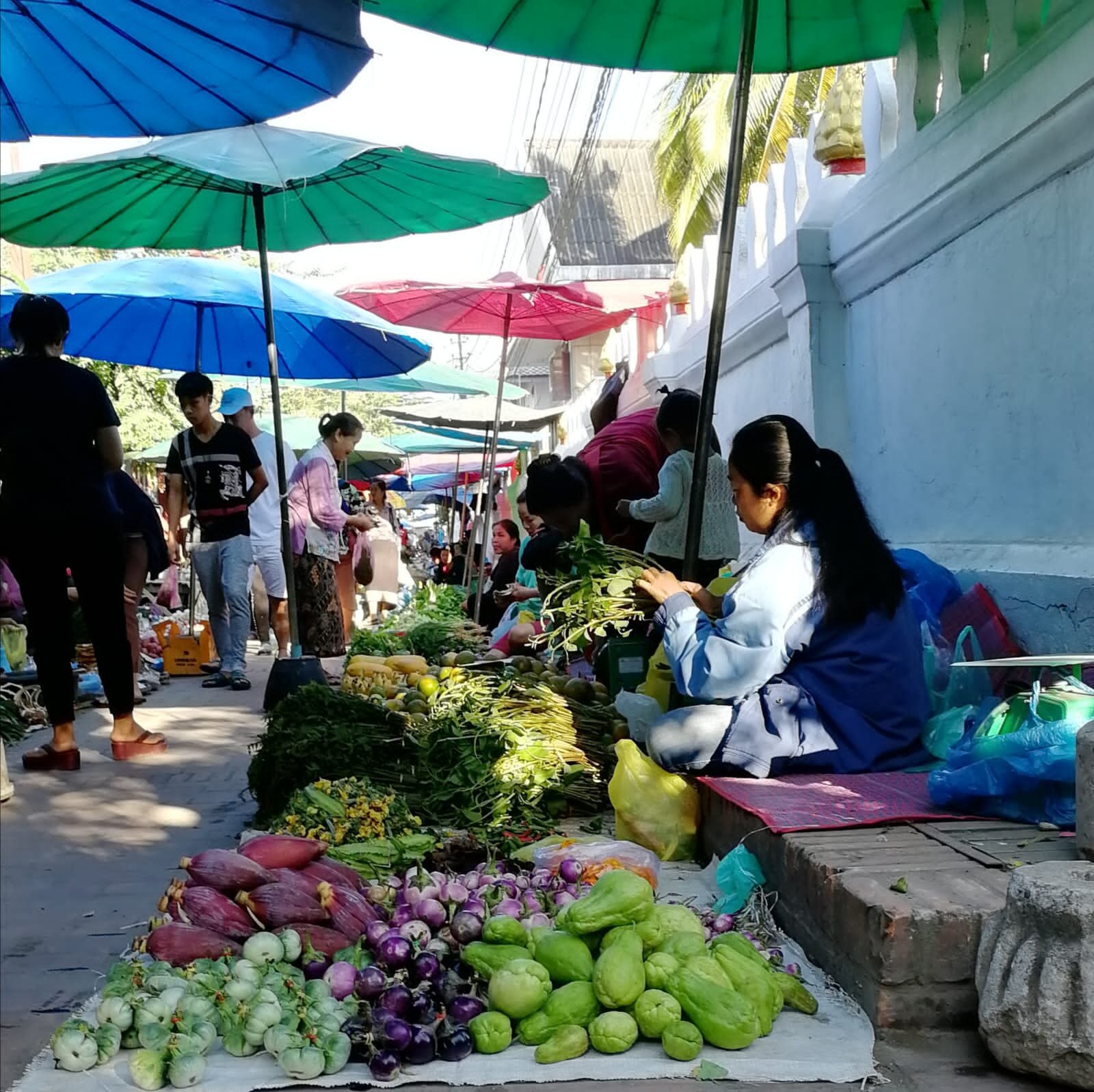
In January, the boys came back to spend ten days here. While here, Steven and Matt managed to find a guesthouse we could rent so that we could be hands-on on the ground and see how things worked. In August of 2014, Steven and Matt and the kids moved to Laos first to find houses, start running the guesthouse – Merry 1 - and get the kids settled before the school year started. In September, Susie and Rachel followed. Two days after Rachel moved to Laos, Matt moved to Hong Kong to start a new job.
When we first arrived, we had made a list of things that we thought the city could use – a real estate agency, large hotel, dairy, and some other ideas as well. Within the first few weeks we had a conversation with a friend about some of these ideas, but said that we thought the hotel should come first. The idea was always to design an eco-hotel, get the land and the licenses and then sell to the highest bidder, sit back, relax and play with the other ideas.
What a great idea! Only, it wasn’t to be that way. Two months after our arrival, our friend called us and said he had a farmer who was willing to work with us on milking buffalo. Oooooohhhhhkkkkaaaayyyyy….. so I guess that means we’re switching lanes.
Off we went to meet with this farmer and started to chat with him. We had to explain where milk came from, as it turns out that since there is no dairy culture here in Laos, most people thought that milk either came from a box (the UHT milk they are familiar with drinking) or from fruit – like coconut. We had discussions about how you could milk buffalo, just like you milk cows and showed him videos of people in India milking buffalo.
During the month and a half that we had discussions with him, we had a guest staying with us at Merry 1 that turned out to be more helpful than just a guest staying with us! One morning when she walked into reception, I looked at her and had a funny thought. I said to Maria, “Do you, by any chance, have any dairy knowledge?” Maria gave me a very shocked look and said, “Actually, yes, I do! I worked on a dairy farm for ten years, and I’ve been in dairy finance for 15!” I was so excited, I blurted out, “You’re my new best friend!”
Maria sat down at the desk with me, and I explained that we had an idea to start a buffalo dairy farm. We had a farmer that we were beginning to work with, and we needed help writing out directions on how to milk buffalo. She told me that she had never milked a buffalo, but she had milked cows and it couldn’t be all that different. After some discussion on how to do it, she promised that she would write up instructions in a step by step list for us, that we could then go and get translated into Lao. She was also interested in meeting the buffalo, as one of the things that she warned us about, was that if the buffalo were anything like cows, they weren’t very friendly with strangers and what we wanted to do might be very difficult.
With the translation done, we called the farmer again to go and see him and do some more explaining. This time he asked if we wanted to meet the buffalo. And of course, we said yes! We asked Maria if she would be interested in coming along since she was our milking specialist at this point and could be there to help answer any other questions the farmer might have as well. She was excited to come with us and meet the buffalo to gain a better idea of whether what we wanted to do would even work.
When we arrived, the farmer walked us into a little field he had nearby where he and his neighbor kept their buffalo. He told us that he had one tied to a tree as this one was kind of testy and didn’t like anyone, so he wanted to make sure we were all safe. Let me tell you it was a bit intimidating walking into that field with those big animals, having never been up close and personal with a buffalo before!
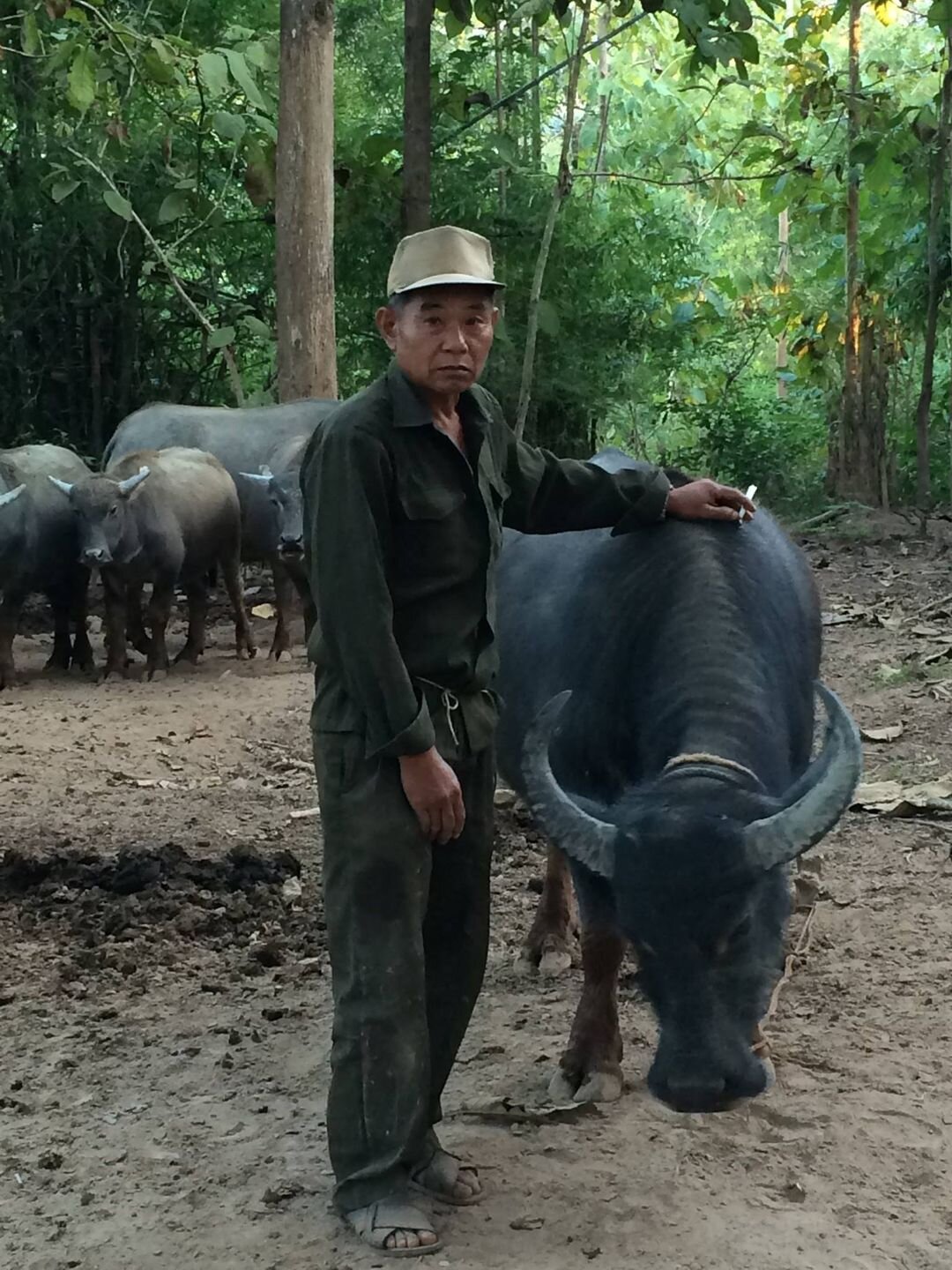


As soon as we entered, the farmer walked right up to one and started to scratch it on the butt. Its tail raised immediately, which we soon learned was a sign that it was enjoying what the farmer was doing. Before long, surrounded by curious buffalo, I was getting a bath by buffalo tongues! When the farmer noticed this, he asked if I wanted to stay with the buffalo as it was clear they liked me. Thank you, but no thank you. ☺ Maria was surprised at the curiosity and calm nature of the buffalo and decided that we wouldn’t have a problem at all if most buffalo were like this.
At the end of the day, we were happy and thought we could start a successful trial….. Until…. We received a phone call from the farmer, and he asked if the baby still needed to be drinking milk from the mother for this all to work. When we answered that yes, that was key to the trial, he told us that that had stopped a month ago. We thanked him and said we would see him next time around when the babies are born.
Being stalked by a buffalo…..but isn’t she cute???
At this point, we decided that we had invested quite a bit of time into what we were trying to achieve and that it was worth sending our team members out on a search to find another farmer who might be interested in working with us. It took about six more months, but finally, we came across Somlit, the village chief in Ban Thinkeo. Somlit is an outside the box kind of guy, and we love him! We spoke with him a few times and explained what it was that we wanted to do. We sat with him and some of his villagers to describe the milking and why it would be good. After some discussions, Somlit told us he would find us a farmer with who we could work.
Finally, we sat down with Mr. Eh, one of the villagers, who had three buffalo with calves that ranged in age from 2.5 – 4.5 months. We talked about the 6-week trial we’d like to do. We explained that we would need to build a fence with a separate pen for the calves and that while they were penned and separated, he would need to feed and water them. This approach was a big deal as in Laos, farmers generally cannot afford to feed, vaccinate, or pen in their animals, so they allow them to roam free looking for food and often wandering in areas where there may be diseases that could harm them.
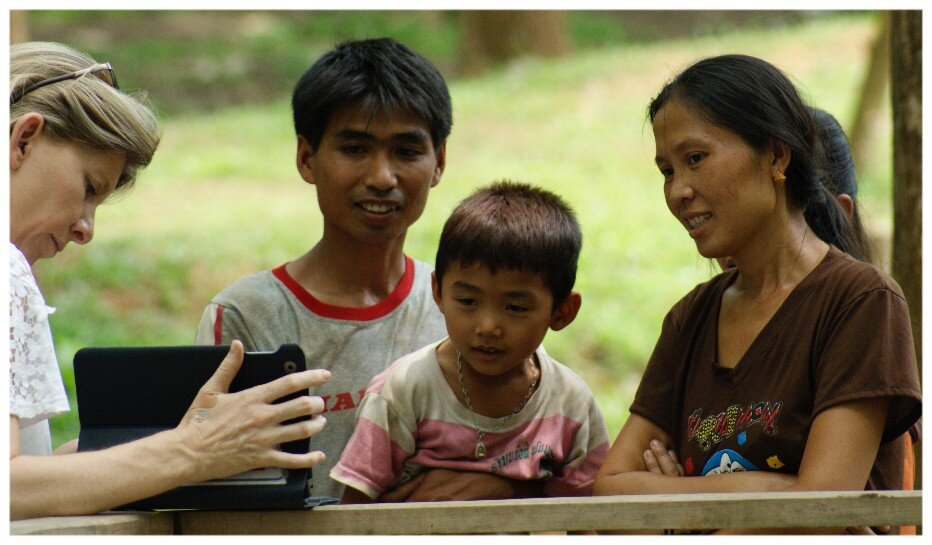

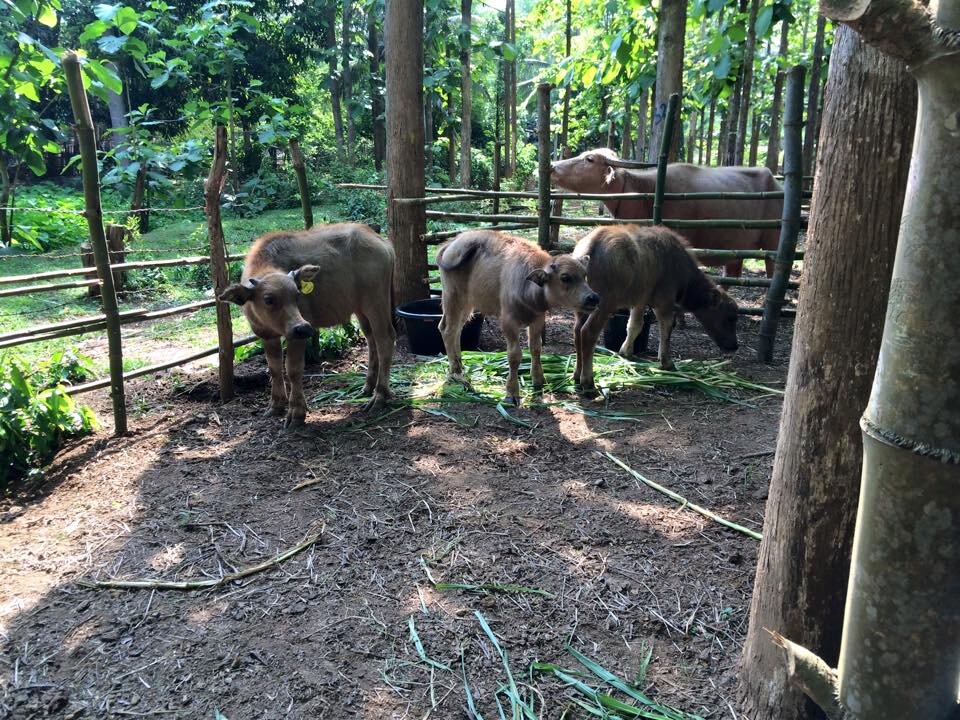
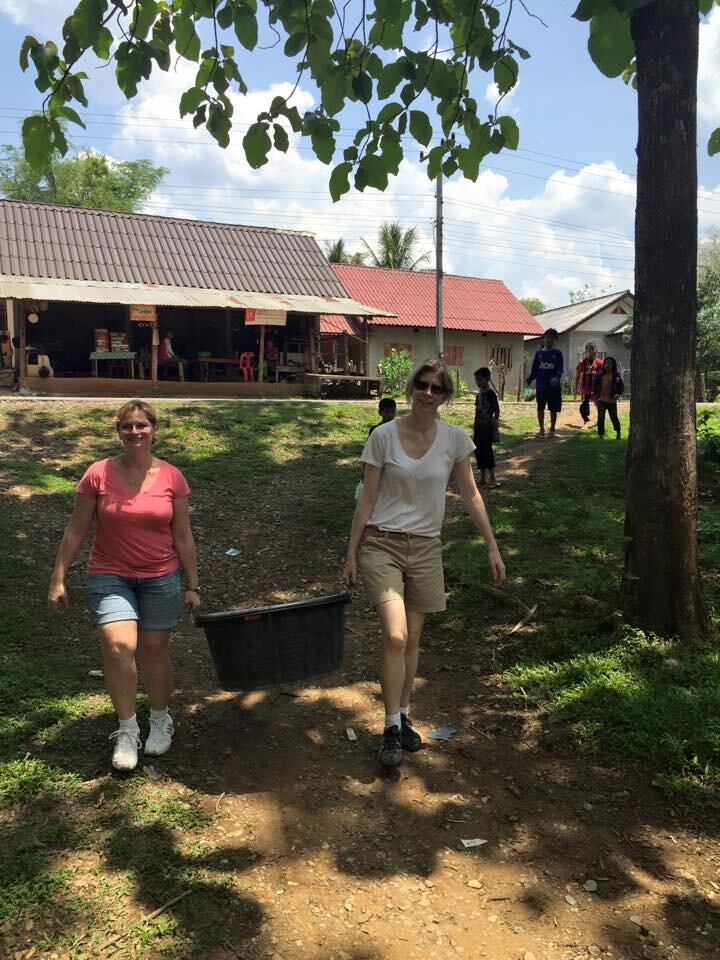
We looked at an area he had under some teak trees where he already had a pen of sorts built and then discussed how it would need to be changed a bit and reinforced. And add in a crush that we will be able to get the buffalo into securely so we can milk her. We explained that she would be more amenable to milking if we fed her at the same time and we would need to build a little trough as well. We bought the supplies to do it all and like Captain Picard, on Star Trek instructed, “Make it so!”
Once the buffalo were penned and separated, we started to milk or at least tried to milk them. It took a bit of time for them to get used to what we are doing and produce any milk. Having never been handled like this, we needed to teach Mr. Eh and his wife how to do it, since it was their buffalo and they were more accustomed to being handled by them. We were very excited when it worked. We had already talked with Mr. Eh about how the milk needed to be kept cold after milking until we could pick it up. And this posed a problem in the beginning as most people in Laos still do not have refrigeration in their homes, but they do have big coolers that they fill with ice. We supplied him with containers to milk into and store the milk – a separate one for each buffalo so we could keep track of how much milk they gave.
Steven as the “Caped Cheese Crusader” flying by to go get milk.
Steven drove out to Thinkeo every day to collect the milk and bring it home to me. Every 3 to 4 days, I had enough milk with which to experiment. And every 3 to 4 days, I tried to make cheese and cried. Why did I cry? Well, it was impossible to find cheese recipes online for making buffalo milk cheeses. There were very few people out there who made buffalo milk cheese and those who did, did not usually share their recipes. So, having never made cheese before, I was using a cow’s milk recipe to try and make it work for buffalo milk and adjusting after each new batch to try for a successful trial. Only, the composition of cow’s milk and buffalo milk are very different and do not react the same way with the ingredients, hence the tears.
I finally decided after days (more like weeks!) of crying and failing, that I needed help! I looked online and found all of the dairies worldwide who made buffalo milk mozzarella and emailed them all with my plight. Of the 15 dairies that I emailed, only one replied. And that was Thea from Shaw River Dairy in Australia who emailed and offered help. In her email, she told me that she could give me her recipe but that it won’t work, which of course stops me right there and I burst into tears yet again! But as I read on, she explained that the differences in fat in the milk plays with the ingredients, and I would have to adjust accordingly. I had an “aha!” moment and realised that I could work with this. So, I compared the recipes, with where I had started, where I have gotten to and with what Thea gave me, and I tried her recipe first. She was right, it didn’t work, but it did get me a lot closer. With a bit more adjusting, I finally perfect a mozzarella ball, just as we finish our 6-week trial. But, at least now we know that we can get milk from the local swamp buffalo and that I can successfully make mozzarella!
Next time...Building Laos' first ever dairy in Luang Prabang!
Here at Laos Buffalo Dairy, we are proud to be recognised at the prestigious WTM World Responsible Tourism Award in the Neighbours and Employees category. The awards this year were a little different as the judges decided to commend businesses and destinations which are taking responsibility and addressing the many challenges of Covid-19.
We won the award for the work we are doing to support the local Laos communities in and around Luang Prabang by setting up the first Buffalo Dairy in the country. The dairy is a popular and growing tourism attraction, and when Covid-19 hit all the income from tourists went away. Instead of shutting up shop, we re-imagined how we could continue to support our staff and the local communities.
Below is what we have been doing to keep local people employed and how we have been using our facilities to help our neighbours cope with Covid-19.
Staff
The dairy continues to employ all its regular staff, all of whom come from the local villages and, although payments have been reduced, all staff still make over the minimum wage. Also, free housing has remained available to any staff if needed. Free English classes for staff continue, meaning the chance to upskill for when Covid-19 is over. For any of the team with children, there is free buffalo milk to improve family nutrition.
Community
In the wider community, we have continued with the nutrition programme we have been implementing. The programme involves pilot projects in four local villages to research the best ways to increase nutrition, and implement improvements with resources already available to villagers. Issues with nutritional concerns will not go away with Covid-19, so continuing to work out the best practice in this area will allow us to roll out the programme on schedule, after reviewing the pilot stage.
Also, as part of the nutrition programme, we continue to expand and diversify from being solely a buffalo farm. During Covid-19 the first two cows arrived at the farm, and recently we acquired our first goats as part of our project to create a goat haven. All of these actions continue to help support the local rural village communities in a time of need.
Instead of cutting back training, the dairy is also continuing a farmer training programme to help the local villages.
Initially, we supported 17 villages and increased this to 20+ communities, all of which continue to receive support during Covid-19.
Free English classes take place on-site, and between 30-50 local children attend these elementary classes. Besides this, during the school holidays, the dairy teamed up with other responsible tourism organisations (Traditional Arts and Ethnology Centre, MandaLao Elephants and Free the Bears) to create a week-long English Language Summer School programme. The scheme allowed around 30 children from the local villages to attend English lessons, and visit these local tourist attractions.
The dairy has built a children’s play area that the local children can come and use every day (Monday-Friday). Up to 20 children use this facility each day.
To increase domestic tourism, we refocused on the local market, and for 50,000 Laos Kip ($6) we offer a tour of the buffalo farm. The money paid can also be used against any purchases in the cafe and is sufficient to cover three scoops of ice cream per person.
All of these programmes could have stopped due to Covid-19. However, it is a sign of the spirit, determination and commitment to our vision that we found a way to continue helping the local communities and loyal staff.
Coming soon!!!
The Little Book Co
We've got exciting news! We've been invited to have a page in a new coffee table book featuring inspiring stories of female business owners and change makers!
The book is going through pre production now and should be available by mid November. Keep your eyes on our next newsletter for more information!
HAVE YOU SEEN OUR SOCIAL MEDIA THIS WEEK?
If not, pop on over to facebook/laosbuffalodairy or instagram/laosbuffalodairy to see what we have been up to!



